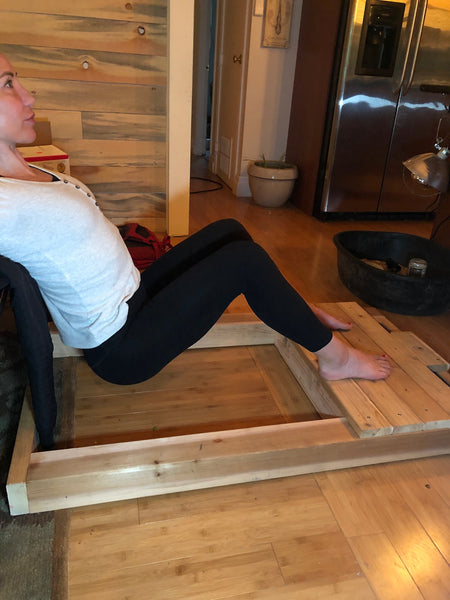Build Your Glutes at Home: Simple Exercise Anyone Can Do

Whether you’re conscious of it or not, people are looking at your butt.
But your gluteus maximus muscle is not just for looks: it should be the largest and strongest muscle in your body to help you move well and stabilize your spine.
Bonus Content: Access the DIY Hip Thruster eBook and video series. Just use code glutes15 at checkout and get started with it
Sadly, for many, their glutes have become atrophied and weak. Saggy glutes are linked with low back pain, knee pain, tight hamstrings and more.
Resistance Training and Your Legs: Important for Metabolic Health
Resistance training your legs regularly is needed to not only slow down age-related muscle loss, but it may also help with blood sugar control which tends to worsen as you age too. Scientists in Denmark sought to figure out if muscles of the legs and upper body differ in their ability to clear blood glucose in metabolically healthy controls and type 2 diabetics (Olsen, 2005). They found more insulin resistance (less glucose clearance) in the leg muscles of the diabetic subjects compared to metabolically healthy controls. Several other studies have shown similar alterations in the muscle of the legs when compared to the arms in obese individuals (Ara, 2011).
After watching this short video, you’ll learn why you should be performing hip thrusts (for your low back) and get ideas about how to make your own Hip Thruster at home.
References:
Ara, I., Larsen, S., Stallknecht, B., Guerra, B., Morales-Alamo, D., Andersen, J. L., et al. (2011). Normal mitochondrial function and increased fat oxidation capacity in leg and arm muscles in obese humans. International Journal of Obesity, 35(1), 99–108. http://doi.org/10.1038/ijo.2010.123
Olsen, D. B., Sacchetti, M., Dela, F., Ploug, T., & Saltin, B. (2005). Glucose clearance is higher in arm than leg muscle in type 2 diabetes. The Journal of Physiology, 565(2), 555–562. http://doi.org/10.1113/jphysiol.2004.081356
RECENT POSTS
CATEGORIES
- 5-MTHF
- Adrenals
- air quality
- Berberine
- Blood Work
- caffeine
- Collagen
- Cortisol
- Creatine
- D-chiro-inositol
- Detoxification
- DHEA
- Electrolytes
- epigenetics
- Erythritol
- Exercise
- Fast Mimicking
- Fasting
- Fat Loss
- fires
- Glutathione
- GLY-NAC
- Glycine
- gut bacteria
- Hormones
- IFOS
- Inositol
- INTERNATIONAL FISH OIL STANDARDS (IFOS) PROGRAM
- Iodine
- longevity
- magnesium
- Magnesium L Threonate
- Metabolic Health
- Microbiome
- minerals
- Monk Fruit
- Multivitamin
- myo-inositol
- N-acetyl cysteine
- NAC
- omega-3 index
- Post exercise
- Pre Workout
- Recipe
- Sleep
- Stevia
- vitamin
- Vitamin B12
- Vitamin D
- Weight Loss
- whey protein
- Women's Health
- Zinc
- Zinc Taste Test





